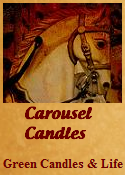Are you aware that in your home or garden there could very well be plants that are toxic to your dog or cat? I wasn't! But thanks to Dr. Karen Becker, holistic veterinarian, I am now aware of pet evil plants that I have now removed from my home and garden and replaced with ones that are safe. Pet owner awareness is an important part of pet wellness and can make the difference between an unsafe and safe environment for your dog, cat or any other breed of pet.
Lets get right down to it so that you can get on with making the necessary changes in your garden or home as soon as possible in order to avoid a poisoned pet and trip to the vet.
Lilies
Although the poisonous part of this plant has not yet been determined, lilies are particularly perilous to cats. Even a small amount of lily plant ingested by your cat can cause severe or even fatal kidney disease.
Marijuana Plants
Dangerous for dog and cat, any portion of this plant can result in depression of the central nervous system, vomiting, lethargy, loss of coordination, increased heart rate, seizures, and coma. In the event that you are legally allowed to grow this plant for medicinal reasons, be sure to keep it well out of reach of your dog or cat or ensure that part of the garden cannot be accessed by your dog or cat or any other that might pass by your garden.
Sago Palms
Tulips
Azaleas and Rhododendrons
Oleanders
Castor Bean Plant
Deadly to both dog and cat this plant contains a toxin called Ricin. Ricin can bring on abdominal pain and bloating, swelling of the mouth and any other part of the gastrointestinal tract. Severe poisoning can cause seizures, musculoskeletal convulsions, twitching, coma and death.
Cyclamen Plant
Cilantro
Yew
Amaryllis
Autumn Crocus
English Ivy
Both these plants contain Calcium Oxalates can cause severe irritation to your pet’s mouth, esophagus and stomach. Signs your dog or cat has ingested either of these plants are vomiting and diarrhea, drooling and difficulty swallowing.
Pothos Plants
Yes! Another very common houseplant, Pothose plants causes soft tissue irritation in the mouth causing swelling of the tongue and sometimes bleeding of the mucus membranes, and difficulty swallowing.
Pet wellness encompasses health and fitness of your pet and also means pet owners need to be wary of the dangers lurking around their house and garden and know how to protect and keep their pet safe. There is a huge percentage of pets, particularly dogs and cats that are poisoned each year caused by medicines and plants. It would be a good idea to find out which plants are safe to have in your home and garden and just stick with those. Anytime you find a plant you would like to take home, simply do a quick search and make sure it is not on the toxic plant list for your pet.
There is no question that a poisoned animal needs immediate medical attention by a qualified veterinarian, however, throughout and following your pet's treatment embrace further pet wellness by selecting the appropriate pet natural remedy(s) that can help relieve your pet from discomfort and side effects caused by the poisoning or possibly even the medication he is needing to take to get well again.
If you suspect your dog or cat has ingested a poison immediately call the ASPCA’s Poison Control Center hotline at 1-888-426-4435. The hotline is answered 24 hours a day, 365 days a year. Then call your vet and let him know the situation and be prepared to tell him what your pet ingested if you know. Take the container or a sample of the plant with you if possible.





































































wow this is a nice information on plants..
ReplyDeleteGeneric Viagra, Kamagra Online, Generic Levitra